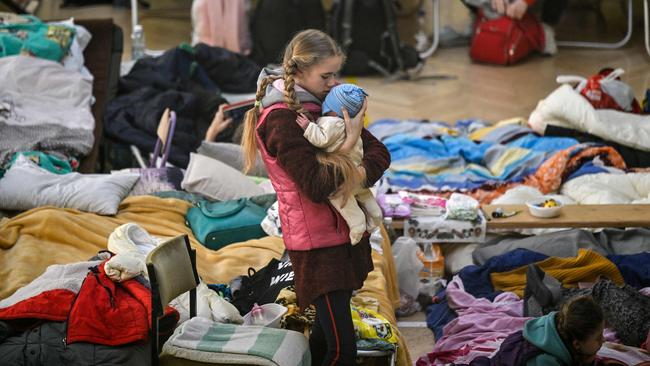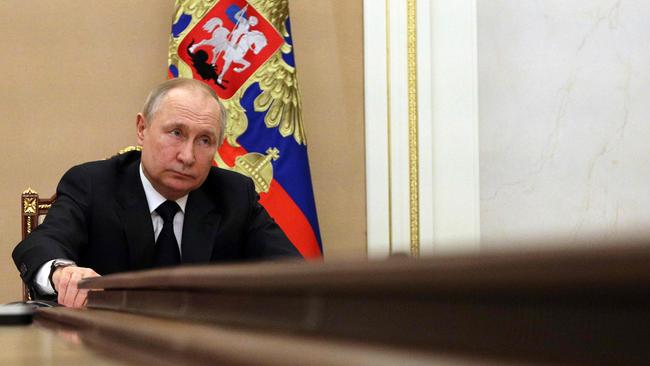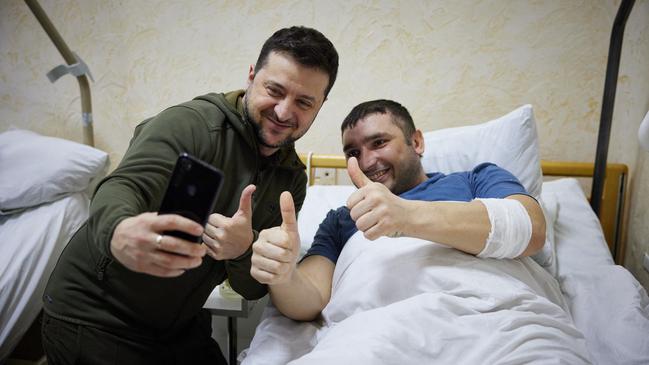Vladimir Putin is sketching in blood the partition of Ukraine
A process of coercive diplomacy will mean an enfeebled rump state in the west

Following the Russian attacks around the battle maps of north and southeast Ukraine is like tracing a piece of kid’s spaghetti stretched out by bored fingers along the edge of half a plate. One almost contiguous line from just outside Kyiv through Chernihiv, Kharkiv, Donbas and Crimea to just outside Odesa. Where’s the strategic sense of it all?
Even as the fighting stop-starts, as Mariupol grows deaf from the thunder of shelling, as the mayor of Melitopol is led off by Russian soldiers, a bag over his head, it’s becoming a bit clearer as to what Vladimir Putin wants to achieve. The Russian President is sketching out, in blood, the future partition of Ukraine.
The key is the Dnieper river, the 2000km waterway that plunges from its source in the Russian Valdai hills through Belarus, through the Ukrainian capital and the industrial hub of Dnipro before reaching the Black Sea shipbuilding centre of Kherson. All three cities have come under attack.
The Dnieper is the economic heartblood of the nation, essential in non-winter months because Ukraine’s road system runs east to west rather than north to south.

It’s seen as the country’s soul. The national poet Taras Shevchenko demanded that he be buried on a hill overlooking the river “so I can see and hear it roar, roaring, carrying thieves’ blood to the oceans”.
To Putin, though, it’s a powerful natural firebreak between the east and west of Ukraine, the historical divide between the west that was controlled by the Kingdom of Poland and the east that was part of Muscovy.
If it’s not possible to have a loyal, united and neutered Muscovy 2.0 in his grip then he might have to settle for a split nation and call it victory.
That could be where a supposedly diplomatic process eventually leads. First, though, he wants to strip rump-Ukraine, a Lviv-centred state, of all meaning, of all true independence.
That means ensuring that it has no access to the sea. The military campaign that stuttered its way through Berdyansk on the Sea of Azov to within artillery distance of Odesa on the Black Sea really seems to have that ambition: to enhance Russia’s maritime capability and impoverish Ukraine, which ships the bulk of its exports through Odesa. Sevastopol in Crimea, home to the Black Sea fleet since the 18th century, will be all but invulnerable to attack.
The declared purpose of the “special military operation” was “denazification and demilitarisation”. This is turning out to be more than the usual Putinesque mystification. The reason that Mariupol has been taking such a thumping is that it provides a land corridor for the Russian separatists of eastern Ukraine and Crimea. It joins up the dots.

However, it is also a fighting base for the so-called Azov battalion, a 900-strong unit that grew out of a far-right Ukrainian group in 2014. They are now integrated into the Ukrainian national guard; their extremist, white supremacist politics is often overlooked because of their ferocity in battle. Typically they smear their bullets with pig fat before shooting at the equally ruthless Chechen Muslims who are fighting with Russian forces.
Originally the Azovs and other similar groups such as Dnipro 1 were funded by Ukrainian oligarchs. For the Putin regime they are thus a useful propaganda target, a way of deflecting from or masking its own war crimes under the slogan “denazification” and tarring the government of Volodymyr Zelensky with the same brush.
As for “demilitarisation”, this has become Putin’s shorthand for bomb attacks on anything resembling an arms depot in western Ukraine. And now too it’s an attempt to justify attacks on suspected NATO arms supply convoys.

Moscow’s slogans matter, then, because they are a pointer as to when Putin may decide to call a halt. If a partition of Ukraine takes place, the Russian leader will insist on the disarming of the west to prevent it becoming a NATO bridgehead. How would that be enforced or monitored? That’s only one of the many uncertainties surrounding an eventual transition to peace.
The biggest question, though, is the future of Kyiv if the country is split. One theory about the stranded Russian column outside the capital is that the option of not destroying the capital is still being toyed with by the Kremlin. There are precedents for non-action. In 2008 Putin decided not to take Tbilisi during his invasion of Georgia. He could, perhaps, spare Kyiv – close to the hearts of Slav nationalists in his coterie – in return for a change of the Kyiv government.
That’s what Putin would deem to be coercive diplomacy. One thing is for sure, the war has not yet played itself out. The diplomatic process cannot even begin without an end to the Russian devastation of cities and trust between the two peoples and two nations has been broken for a generation.
The Times



To join the conversation, please log in. Don't have an account? Register
Join the conversation, you are commenting as Logout